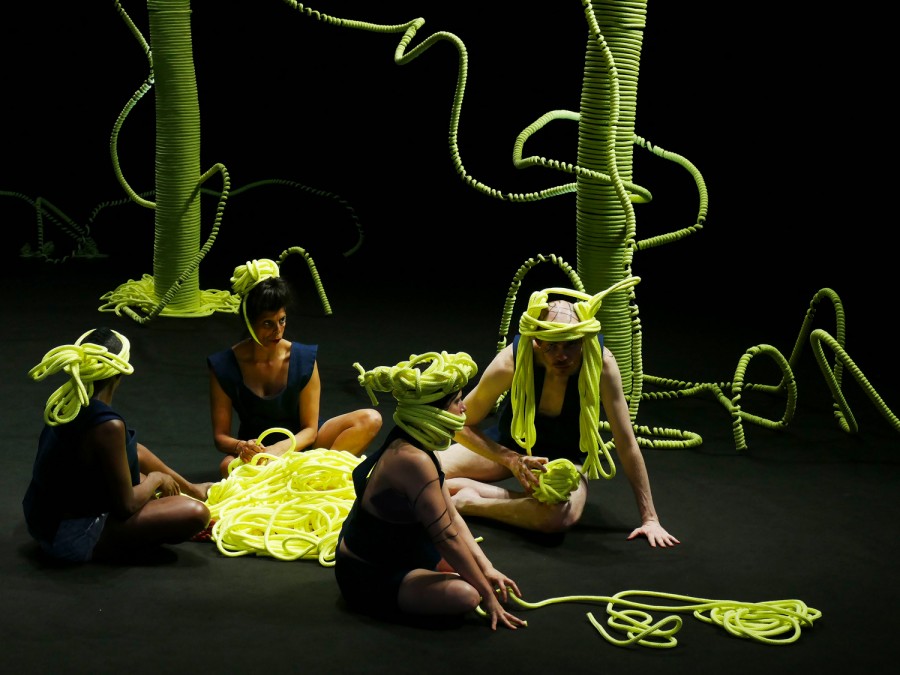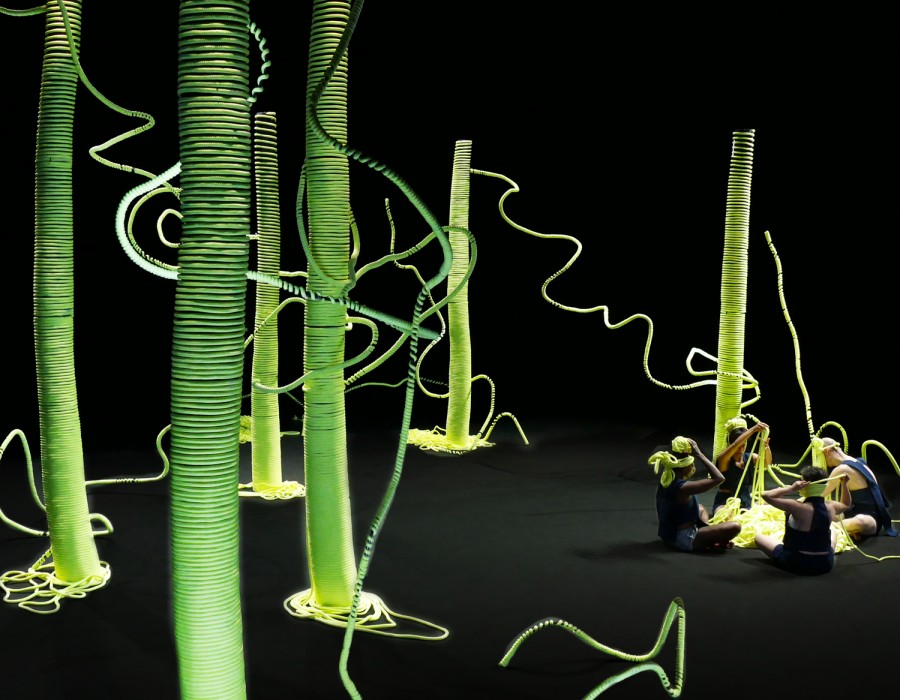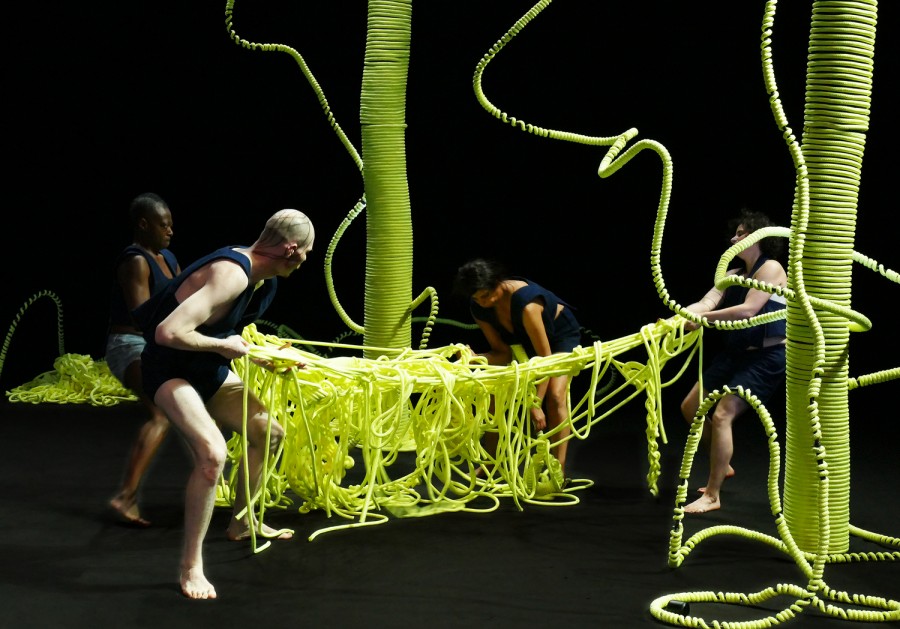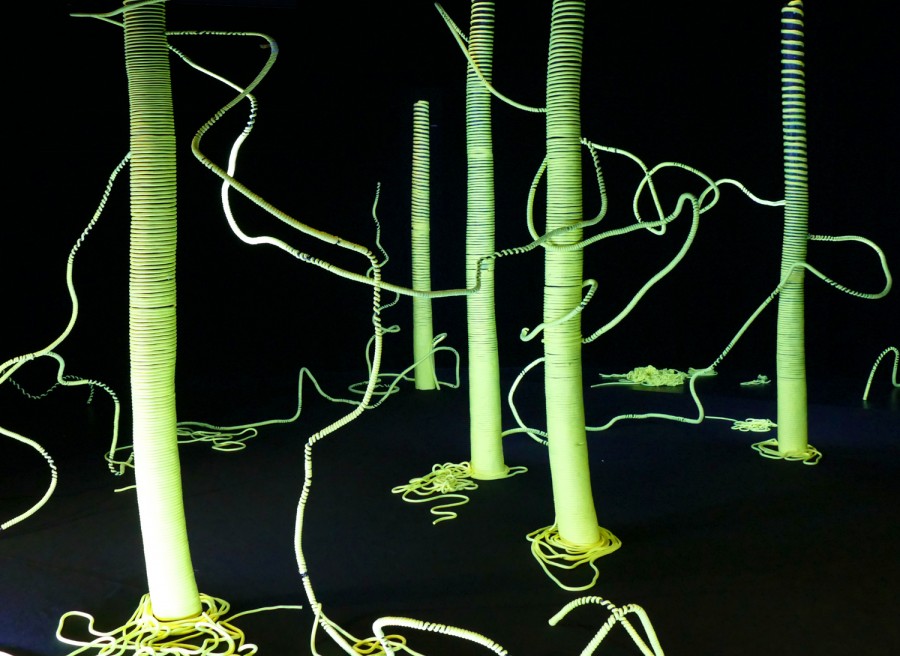WHITE DOG
(2019)A piece for four perfomers, White Dog is an attempt to undo the training of our ways of seeing and our grudges. Circumventing the violence and the media noise of debate, White Dog pays tribute to the strategy of running away, avoiding the traps of our many expectations.
Using themes which are familiar in Latifa Laâbissi’s creations, the process in White Dog is to focus on, powerfully, the movements of flight and running away as a form of poetic struggle. A sidestep, a step backward, an evasion, a twist to enter a round, in a lore without folk for four bodies, in a polyphony of composite, interlaced figures crossing lines and avoiding the ruts of our assignations.
It’s about constructing the self, not against but with the other, or right up against that other, because the process is truly about sharing and hybridization in this great scrum of bodies. Tackling the minority vitality in order to extract from the silence as much as any binary, polemical confrontation, using a “beginning of clandestine activities by a community of wayward individuals,” highlighting the emergence of lianées1 communities. In White Dog, it is no longer just about facing our own clichés, instead attempting to disidentify and disassign certain roles.
This strategy of flight and lianage leads to a forest aesthetic and physical weaving in all its semantic potential, like an “ensemble of lines and elements which cover the man with an underground vegetable uniform, as if to call up the resistance.”2
Nadia Lauro’s set design proposes a possible activation, a plastic and tactile translation of the link, the liane (vine), the underground network which twists the codes, like the duty or the narcissism of recognition.
A piece for four perfomers, White Dog is an attempt to undo the training of our ways of seeing and our grudges. Circumventing the violence and the media noise of debate, White Dog pays tribute to the strategy of running away, avoiding the traps of our many expectations.
Using themes which are familiar in Latifa Laâbissi’s creations, the process in White Dog is to focus on, powerfully, the movements of flight and running away as a form of poetic struggle. A sidestep, a step backward, an evasion, a twist to enter a round, in a lore without folk for four bodies, in a polyphony of composite, interlaced figures crossing lines and avoiding the ruts of our assignations.
It’s about constructing the self, not against but with the other, or right up against that other, because the process is truly about sharing and hybridization in this great scrum of bodies. Tackling the minority vitality in order to extract from the silence as much as any binary, polemical confrontation, using a “beginning of clandestine activities by a community of wayward individuals,” highlighting the emergence of lianées1 communities. In White Dog, it is no longer just about facing our own clichés, instead attempting to disidentify and disassign certain roles.
This strategy of flight and lianage leads to a forest aesthetic and physical weaving in all its semantic potential, like an “ensemble of lines and elements which cover the man with an underground vegetable uniform, as if to call up the resistance.”2
Nadia Lauro’s set design proposes a possible activation, a plastic and tactile translation of the link, the liane (vine), the underground network which twists the codes, like the duty or the narcissism of recognition.
- Latifa Laâbissi has borrowed the idea of lyannaj from Dénètem Touam Bona, moving from the Breton language to the Creolization of the language in the Antilles. "Lyannaj…, this technical gesture essential for exploitation, dispossession, the vampirization of the enslaved bodies—has become in the French Antilles, by an odd reversal, a powerful expression of solidarity, creativity and connections which liberate us", in TOUAM BONA Dénètem, "Vanishing lines of running away: ‘lyannaj’ or the spirit of the forest", Multitudes, vol.70, #1, 2018, pp. 177-185.
- Ibid.




